Yellow curry or gaeng garee is Thai comfort food, made with tender-braised meats in a rich coconut curry sauce that's incredibly aromatic from loads of spices. While there's nothing wrong with using a store-bought yellow curry paste, making your own from scratch can take your curry to the next level. It's also a really satisfying cooking project!
Once you've got the paste, you can use it in my yellow curry chicken, yellow curry beef, or even in a vegetable dish such as this quick cauliflower curry!
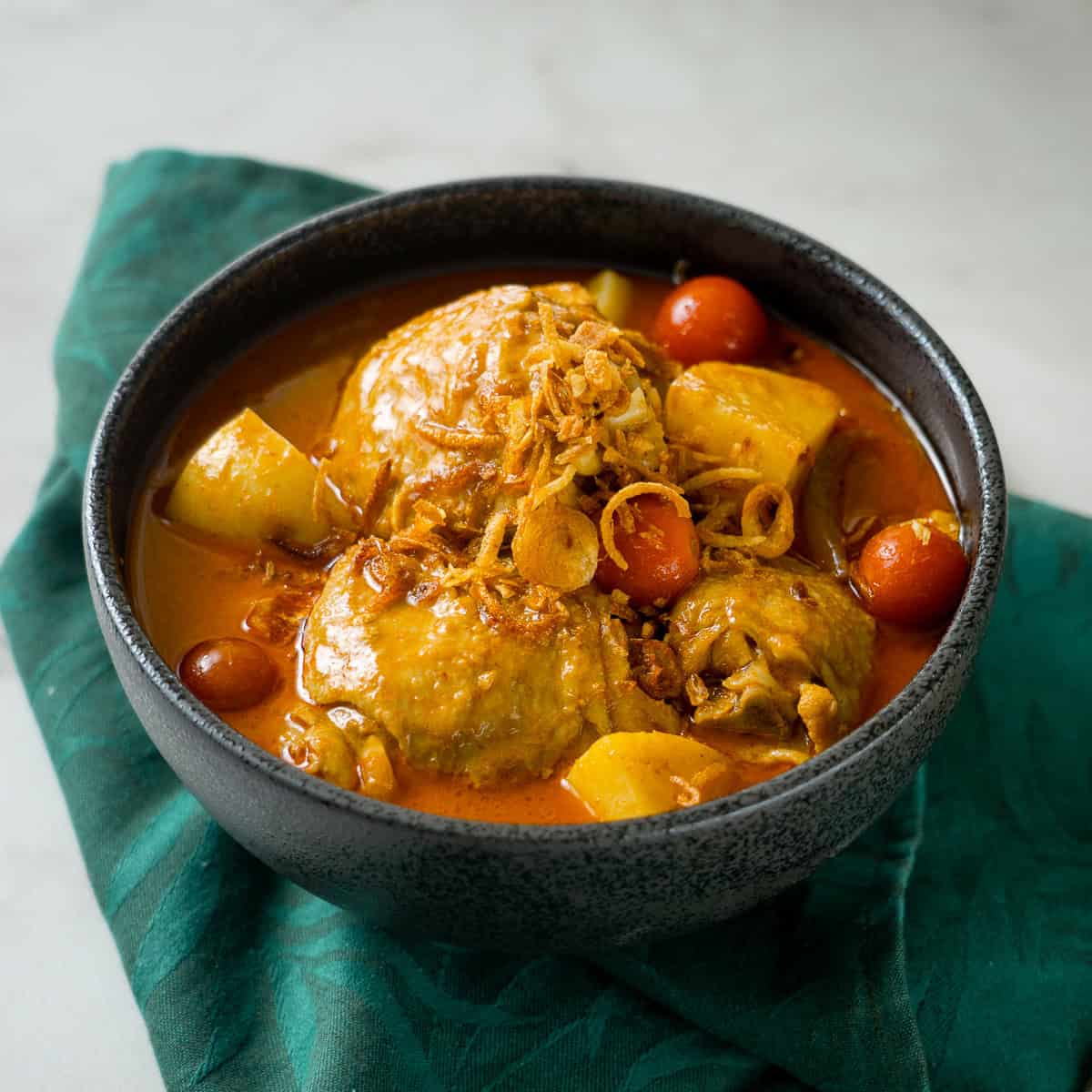
Important Disambiguation
There are 2 different Thai curries that are referred to in English as "yellow curry:" gaeng garee and gaeng lueang. This recipe is for gaeng garee, and let me clarify what these two are so you know which is which.
Gaeng Garee (this recipe), sometimes written as kaeng karee, is what most people know as yellow curry. It's a coconut milk-based curry that is mild and rich, typically made with braised chicken or beef, and contains potatoes and onions. If you walk into any standard Thai restaurant in the Western world, this is likely one they serve.
Gaeng Lueang, which is a southern Thai dish whose name actually means "yellow curry," though it is not one most people know. It is a water-based curry without coconut milk, which means it is light and brothy, and by Western standard it would be perceived more as a soup than a curry. It is a spicy and SOUR curry as tamarind is one of the main seasonings. If you want to get a better idea of what it is, it is basically my gaeng som sour curry recipe with turmeric added.
*IMPORTANT: When you are shopping for pre-made yellow curry paste, be sure to carefully read the label as people have mistakenly bought "Yellow Sour Curry Paste," thinking that it is the paste for gaeng garee!
Ingredients
Here are ingredients you'll need and some helpful info. For amounts and instructions, see the recipe card below!
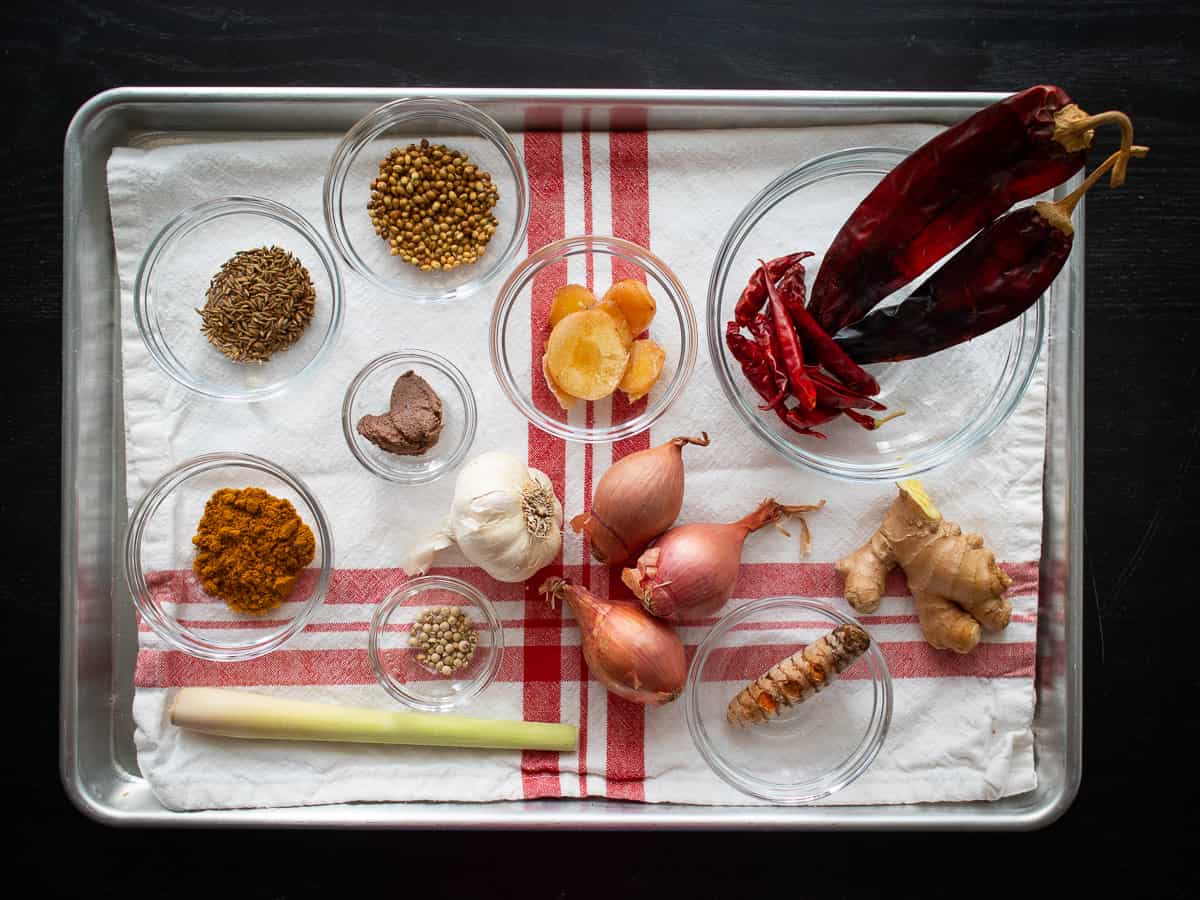
- Mild dried red chilies, I usually use guajillo peppers which can be found at Latin American stores. Korean gochugaru will work in a pinch. In Thailand, they would use dried spur chilies which are very hard to find here.
- Spicy dried chilies (optional). Yellow curries can be quite mild, but if you want to add some heat, add any kind of smaller spicier dried chilies such as Thai or chiles de arbol.
- Coriander seeds, toasted
- Cumin seeds, toasted
- White peppercorns, black will also work.
- Salt, if pounding curry paste by hand, coarse salt is preferable as the abrasion helps breakdown the herbs.
- Curry powder. There's no need to look for "Thai curry powder" as this is an ingredient that came to us by way of India! Any curry powder you have at your local store will work, as long as you like how it smells! Personally love the Japanese S&B brand curry powder.
- Lemongrass, bottom half only, which is where most of the flavours are. You can save the tops and freeze them and add to stock or soups, anywhere that would benefit from a subtle lemony aroma.
- Ginger
- Galangal
- Fresh turmeric. This is the ingredient responsible for the "yellow" in yellow curry paste. I prefer fresh here as I think it tastes better, and they are quite available these days especially at healthy grocery stores. But if you only have turmeric powder it will also work.
- Garlic
- Shallots, finely chopped
- Fermented shrimp paste, called gapi in Thai, this funky paste adds umami and is traditional in Thai curries. Omit if vegetarian, or substitute miso paste.
How to Make Yellow Curry Paste in a Mortar and Pestle
Here's how to make the yellow curry paste by hand, with the help of a coffee grinder for dry spices. I highly recommend reading my notes on tools for making Thai curry paste below before you start so you can choose the right tools for you.
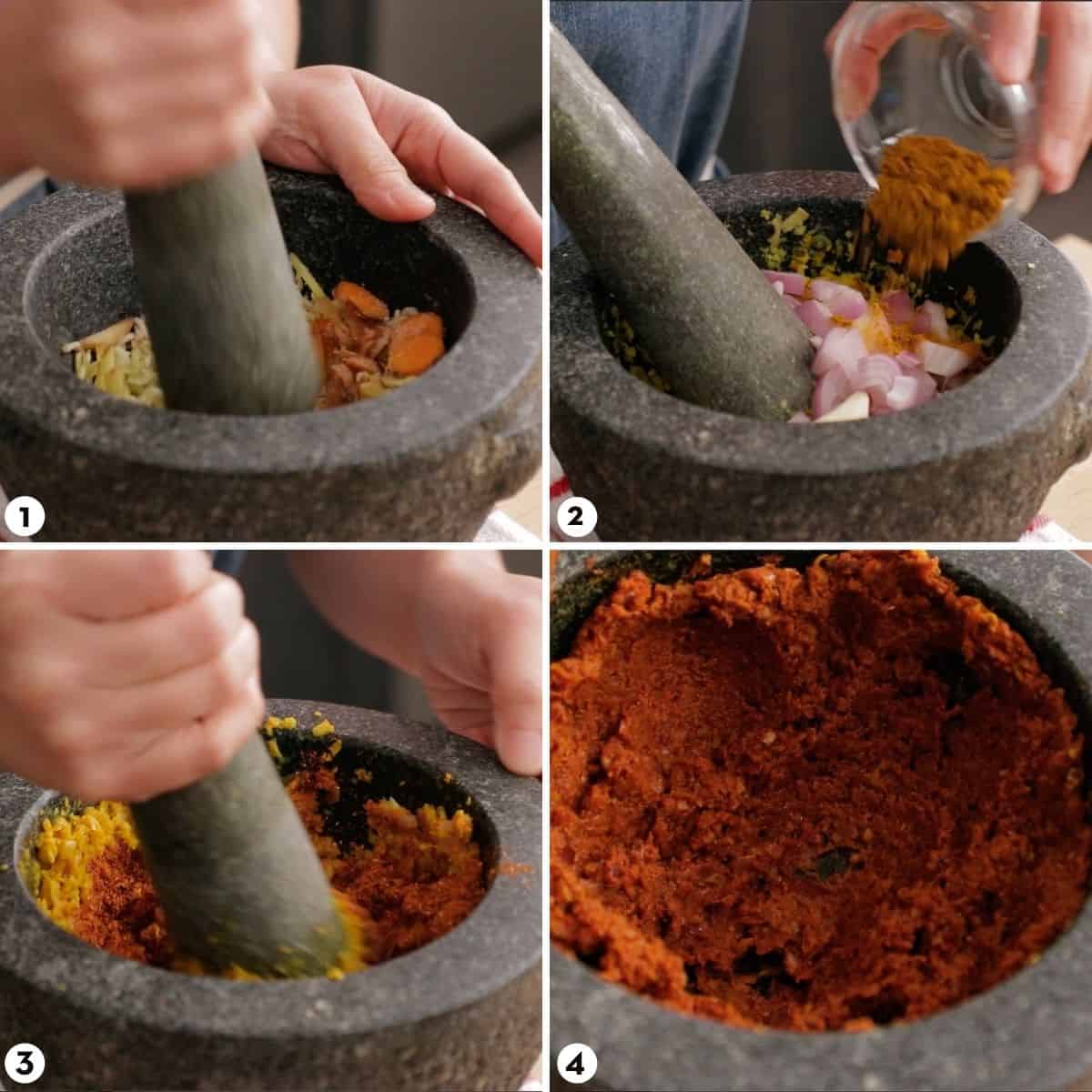
- Pound the lemongrass, galangal, ginger and turmeric into a fine paste.
- Grind all of the dried spices, including dried chilies, in a coffee grinder, then add to the mortar along with the garlic and shallots.
- Pound into a fine paste and then add shrimp paste and pound to mix.
- The yellow curry paste paste is now ready to use, or it can be frozen.
Important notes on tools for making curry paste
The tools you use to grind curry paste will significantly affect how much time this recipe takes. Please read the following notes before you start.
- Using a coffee/spice grinder for dry ingredients is the most significant time-saving step, because grinding dried chilies by hand is the most time-consuming part. So do this regardless of which tools you use to grind the fresh herbs.
- For the fresh herbs, using a good immersion blender will save the most amount of time. This is how I normally make curry paste. See my post on how to make red curry paste for more details on how to use it.
- If using a mortar and pestle, you should use a heavy-duty granite set that is large enough for the amount of paste (3-cup capacity/5-6 inch internal diameter is the minimum I would recommend for this recipe). It's a royal pain in the behind, if not actually impossible, to try to pound curry paste in a cute little marble set!
- I don't recommend using a food processor for this, as it doesn't get the paste fine enough, and it requires you to make quite a large amount for the blades to even blend properly.
- A jug blender is not ideal as it requires you to add quite a bit of liquid to the paste so that it will blend properly. This is not the end of the world, but you'll have to account for this extra liquid and make adjustments accordingly when you cook with this paste because most recipes (and all of mine) are not meant to be used with a runny curry paste. If you're confident in making these adjustments, go for it.
Save this recipe!
Storage
If you plan to use the curry paste within a week, you can keep it in the fridge in an airtight container. But if you have no plans for it yet, definitely freeze to maintain flavours of the herbs and spices.
All Thai curry pastes freeze exceptionally well. You can put it in a freezer bag and flatten it so that it will be quick to thaw, and remove as much air as possible before sealing. If you don't want to use freezer bags, mason jars will work, but you may have to let it thaw a bit so it's soft enough to scoop. Commercial curry pastes can often be scooped directly from frozen because the large amount of salt (added for preservation purposes) prevents it from freezing solid. Homemade pastes usually contain less salt and therefore freeze harder.
PRO TIP: If you are freezing multiple portions of curry paste in the same freezer bag, after flattening the paste, use the back of a knife or something flat to create a "crease" that separates the curry paste into portions. This will make it easier to take out one portion at a time.
Different ways to Use Yellow Curry Paste
Of course you're thinking about making a yellow curry, so this yellow curry chicken or yellow curry beef are probably what you'll make first. But, there's more you can do!
You can use Thai curry pastes in many ways. Try stir frying with it in this cauliflower curry stir fry recipe, or try substituting it for the curry paste in this Thai sausage recipe. Also check out my video on 5 ways to use curry paste (besides making a curry!)
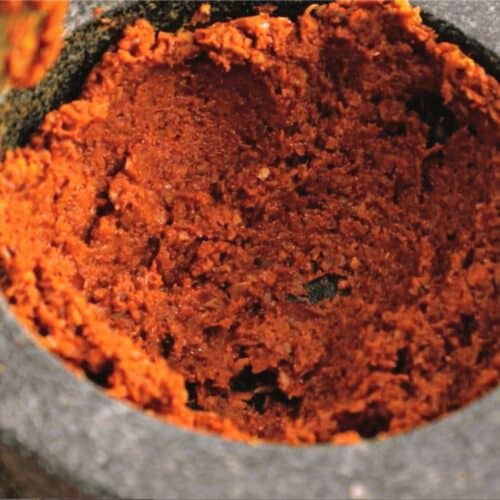
Yellow Curry Paste Recipe
Save this recipe!
Ingredients
- 0.7 oz mild dried chilies, cut into ½-inch chunks (see note 1)
- 1 tablespoon coriander seeds, toasted
- 1½ teaspoon cumin seeds, toasted
- ½ teaspoon white peppercorns
- 1 teaspoon salt
- 1 tablespoon curry powder, (see note 2)
- 1 stalk lemongrass, bottom half only, finely chopped
- 2 tablespoon ginger, finely chopped
- 2 tablespoon galangal, finely chopped
- 1 tablespoon fresh turmeric, finely chopped
- 6 cloves garlic, finely chopped
- ½ cup shallots, finely chopped
- 2 teaspoon fermented shrimp paste, omit if vegetarian
Notes
- Though yellow curry is usually on the milder side, you can make the curry spicier by replacing some of the mild dried chilies with hotter ones, such as chiles de arbol or Thai chilies.
- Any curry powder available at your local store will work, as long as you like the way it smells; it does not need to be a Thai brand.
FULL VIDEO TUTORIAL
All my recipes come with step-by-step video tutorials with extra tips not mentioned in the blog post, so make sure you watch the video to ensure success. If you enjoy them, consider subscribing to the YouTube Channel to not miss an episode. Thank you!
Subscribe to my YouTube ChannelInstructions
- Add the chilies to a coffee or spice grinder and grind into a powder.0.7 oz mild dried chilies
- In a stone mortar and pestle, add coriander seeds, cumin seeds, and white peppercorns; grind into a powder. Remove and set aside in a bowl; add curry powder to this bowl.1 tablespoon coriander seeds, 1½ teaspoon cumin seeds, ½ teaspoon white peppercorns, 1 tablespoon curry powder
- Add lemongrass, galangal, ginger, turmeric and salt to the mortar and pound into a paste. When the mixture feels too wet, add the dry spices to help absorb the liquid and continue to pound into a fine paste.1 stalk lemongrass, 2 tablespoon ginger, 2 tablespoon galangal, 1 tablespoon fresh turmeric, 1 teaspoon salt
- Add ground chilies, shallots, and garlic; pound into a fine paste. Add shrimp paste and pound to mix.6 cloves garlic, ½ cup shallots, 2 teaspoon fermented shrimp paste

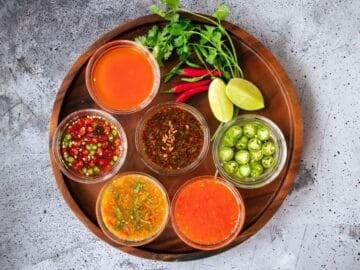
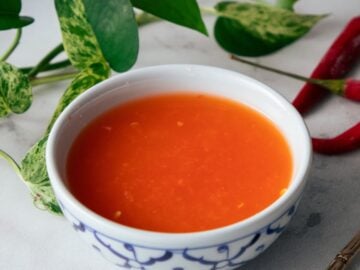
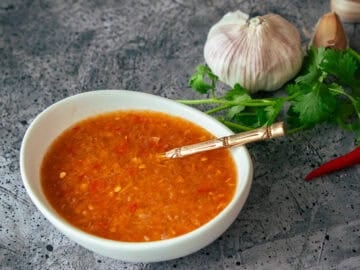

Brian Edelstein says
Do you have a recipe for your own curry powder. I have clove, cumin, ginger, coriander, berbere, nutmeg.
Thanks
Clarence Whorley says
Came here for a yellow curry paste recipe, ended up falling in love😔
Josh says
Hi there!
I just made your Yellow Curry recipe (using store bought paste) and it was delicious! I really want to start introducing my kids (7 and 5) to Thai food, but the yellow curry was just too spicy for them. I was thinking of making your paste to remedy this, but I see it does call for chilies. If I use the mild chilies, do you think it will be ok for my kids? Or would you recommend omitting the chilies altogether (blasphemy!)? Thanks so much for everything you’ve be put together! We love your recipes!
Pailin Chongchitnant says
Hi! If you use mild chilies such as guajillo, it'll be fine for them. It has no heat at all. Do not omit the chilies!!! Good luck!
JUSTIN MONROE says
Why dried chilis instead of fresh? Could I substitute dried chilis for fresh birds-eye chilis for more spice?
Pailin Chongchitnant says
You can use fresh, but the flavours will be different. If you want the traditional flavours of this curry, then you should use dried. You can still add more chilies for more spice though!
Laura says
**whoops accidentally posted this as a reply rather than here
Hello!
Was wondering if for the ginger, galangal and turmeric you could please give the rough equivalent of how many and what sized “chunks”/pieces will be needed! (Just because I’m having a hard time knowing how much to buy/ex: how much 2 tbsp of fresh ginger would be).
Excited to give this recipe a try!
Pailin Chongchitnant says
Hi Laura, it's hard to say because ginger comes in vastly different sizes, some are very fat and others very thin. But if you buy a 3-inch piece, that should be more than enough for 2 tablespoons.
Angie says
Hi there,
What are the large red chiles you are using? Most widely available to me are Mexican dried chiles--so New Mexico, guajillo, California, puya, etc. Are any of these acceptable?
Pailin Chongchitnant says
Guajillo and puya will both work perfectly!
Rick says
I have made this several times, its a family favourite now. I use mexican guajillo for the bulk of the chillis with a couple of Arbol for heat.
David says
Hi
What curry powder mixture do you use? I cannot find Thai Curry Powder in UK and homemade ones i can find consist of Turmeric, Bay Leaves, coriander, cumin, ginger, chilli flakes, white pepper and whole clove but don't know if this is authentic or not
Thanks
David
Pailin Chongchitnant says
THere's no need to stress out about the curry powder, even in Thailand they differ from place to place. So my rule of thumb is if it smells good to you, it's good to use. Whatever is available at your non-Asian grocery store is fine, something more adventurous at Indian stores is also good to use.
Rick says
In the UK I have found that the S&B brand "oriental curry powder" is a really good fit. Can find it in pretty much any Asian supermarket.
Laura says
Hello!
Was wondering if for the ginger, galangal and turmeric you could please give the rough equivalent of how many and what sized “chunks”/pieces will be needed! (Just because I’m having a hard time knowing how much to buy/ex: how much 2 tbsp of fresh ginger would be).
Excited to give this recipe a try!
Myron says
Can o substitute cayenne powder for dried chilies? If so, how much would be the equivalent of 8-10 large dried chilies?
Pailin Chongchitnant says
The weight of the dried chilies come to about 10 grams, so you can substitute that amount of cayenne. HOWEVER. I've never tried cayenne so maybe start with 8 grams and see if it's too spicy or not. You can always add more to the curry itself!
Koen says
Why not just grind all dry spices? 🙂
Adam from HTK says
Hi Koen! Not sure what you mean by "grind" as they are ground in a mortar and pestle. "In a stone mortar and pestle, add cumin seeds, coriander seeds and white peppercorns; grind into a powder." Can you expand on that? Cheers! Adam
Erin says
Can you use ground turmeric if you can't get fresh tintuic? I seem to have lost my fresh tumeric in the freezer and would prefer not to go to the grocery store solely for it given the pandemic! If yes, how much would you substitute? Thank you so much in advance!
Pailin Chongchitnant says
Sorry this was missed! I'd sub ½ tsp ground turmeric for this recipe.